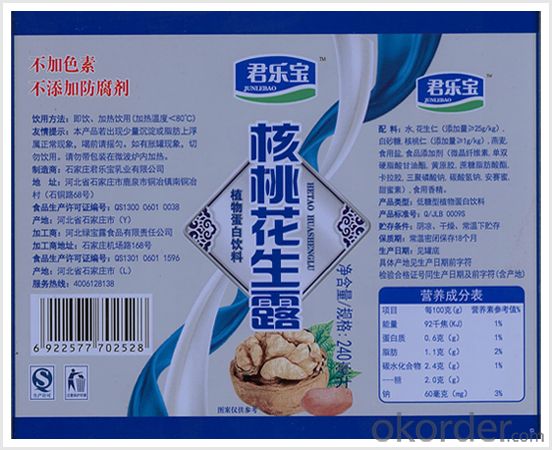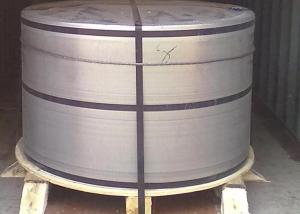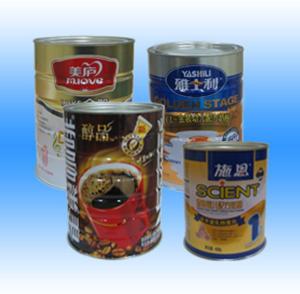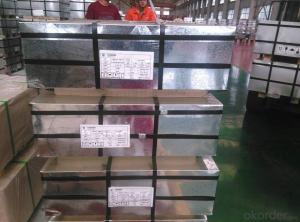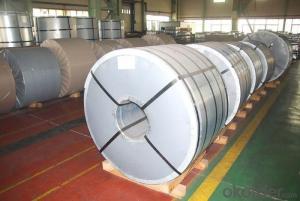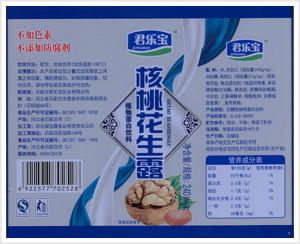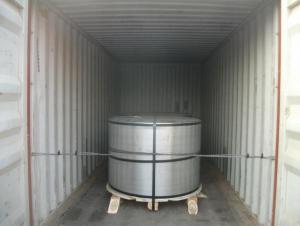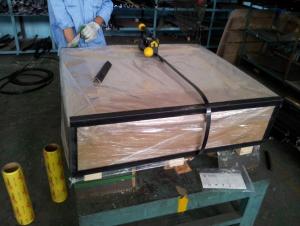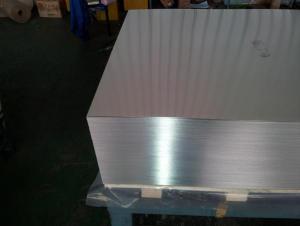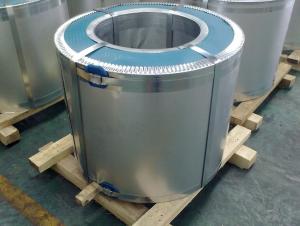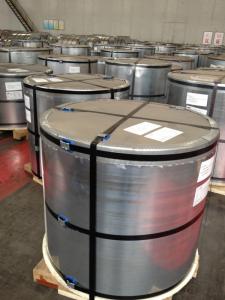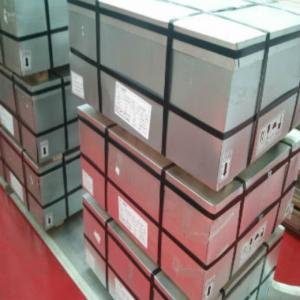Printed Tinplate For Milk Powder, GIS G3303
- Loading Port:
- Tianjin
- Payment Terms:
- TT OR LC
- Min Order Qty:
- 25 m.t.
- Supply Capability:
- 40000 m.t./month
OKorder Service Pledge
OKorder Financial Service
You Might Also Like
1.Usage
Tinplate is widely used for making all types of containers, containing industrial usage such as paint can, oil can, aerosol cans etc., and food cans like milk powder cans, tomato paste can, dry food cans etc.
2. Quality
As a state owned company and a large tinplate supplier in China, our tinplate quality ranks 1st level in China, similar to Bao Steel, Posco etc.
3. Specification
standard: GB/T2520, JIS G3303, DIN EN10202
Material: MR /SPCC
Thickness available: 0.16-0.50MM
Width available: 600~1050MM
Temper grade: T1 – DR8
Tin coating: ordinary 2.8g/2.8g, 5.6g/5.6g and others
Package: sea worthy export package.
Applications: Tin can for chemicals & paint cans, industrial cans, food cans
4. Our factory photo & equipments

5. Our Markets:
now our tinplate has been sold to more than 50 countries, including Europe country, Gulf Area, South American, South Afric etc.
6. Our Overseas Wareouses:
Furthermore, in the year 2014, we have more than 10 overseas warehouses all over the word, located in KSA, UAE, Oman, Russia, Kuwait, Qatar, Oman, Chile, Brazil etc.
7. FAQ
a. what's the annual output?
about 500,000 tons per year.
b. where's the raw matrial from?
our hot rolled coil is purchased from Capital Steel and other state owned mill, with quite good quality.
c. how long is the delivery time?
normally for SPCC about 45~55 days, while 65~75 days for MR material
d. how to control the quality during production process?
inside our workshop, we have MES syestem. It realizes the optimization of the production procedure in the workshop. It could record each step of the whole production procedures, and if some problem appears, factory could easily found and take action, it’s quite helpful to monitor and control the quality.
- Q: Can tinplate be used for automotive components?
- Yes, tinplate can be used for automotive components. Tinplate is a type of steel coated with a thin layer of tin, which provides corrosion resistance and aesthetic appeal. It is commonly used in the automotive industry for various components such as fuel tanks, oil pans, and engine covers.
- Q: What material is the tin plate, please?
- Popularly speaking, it was tin plated on the surface of the iron sheet, just because it was imported by Macao at that time, so it always called "tinplate iron"
- Q: How does tinplate contribute to the functionality of household goods?
- Tinplate contributes to the functionality of household goods by providing a durable and corrosion-resistant coating that protects the underlying material from moisture, oxygen, and other environmental factors. This ensures that household items such as cans, containers, and appliances have a longer lifespan and remain in good condition. Additionally, tinplate's versatility allows for easy shaping and forming, enabling the creation of various functional and aesthetically pleasing designs for household goods.
- Q: How does tinplate packaging withstand extreme temperatures?
- Tinplate packaging is able to withstand extreme temperatures due to its high melting point and excellent heat resistance properties. The tin coating on the steel base provides a protective layer that helps to prevent the metal from warping or melting when exposed to extreme heat. Additionally, the structural integrity of tinplate packaging is maintained even in extreme cold temperatures, making it a reliable choice for preserving the quality and safety of various products.
- Q: Tin and tinSince the back skin as long as tinplate will rust, so why not replace tin?
- Oftinned is actually, tinplate, commonly used in food and beverage packaging, have good anti-corrosion effect, and no harm to human body. We used a lot of tinplate cans, is done. The tinplate back skin, is actually the plate above the tin, is physical effect eroded, so the steel will rust.
- Q: Tinplate which applies to product packaging?
- Tinplate has obvious superiority compared with other packaging materials.1. good mechanical properties: tinplate cans relative to other containers, such as plastic, glass, paper containers and uniform strength and good rigidity, it is not easy to break. It is not only used for small sale packing, but also the main container for large transportation package.
- Q: What are the benefits of using tinplate for electrical components?
- Using tinplate for electrical components offers several benefits. Firstly, tinplate is corrosion-resistant, which helps to protect the components from moisture and other environmental factors that could lead to damage or malfunction. Secondly, tinplate has excellent conductivity, ensuring efficient and effective electrical flow within the components. Additionally, tinplate is a lightweight and durable material, making it ideal for use in electrical applications. Furthermore, tinplate is easily recyclable, making it a sustainable choice for manufacturers. Overall, utilizing tinplate for electrical components enhances their performance, longevity, and environmental sustainability.
- Q: Can tinplate packaging be used for frozen or refrigerated goods?
- Yes, tinplate packaging can be used for frozen or refrigerated goods. Tinplate is a durable material that provides excellent protection against moisture and temperature changes, making it suitable for storing and transporting perishable items. It helps to maintain the freshness and quality of frozen or refrigerated goods, making it a popular choice in the food industry.
- Q: What are the main applications of tinplate in the energy industry?
- Tinplate finds various applications in the energy industry, primarily in the manufacturing of batteries and solar panels. It is commonly used as a protective coating for the metal components of batteries, preventing corrosion and extending their lifespan. Additionally, tinplate is used in the production of solar panels, where it acts as a reliable barrier against moisture and other environmental factors, ensuring the longevity and efficiency of the panels.
- Q: Does the tinplate have a tensile rate? Thank you heroes!
- Elongation or section shrinkage is the main index of plasticity of metal materials. The quality of plasticity depends on many factors, and the material is only one of them. For example, temperature and stress state will also affect the plasticity. Marble in high-pressure liquid can also be a good extension of humor.
Send your message to us
Printed Tinplate For Milk Powder, GIS G3303
- Loading Port:
- Tianjin
- Payment Terms:
- TT OR LC
- Min Order Qty:
- 25 m.t.
- Supply Capability:
- 40000 m.t./month
OKorder Service Pledge
OKorder Financial Service
Similar products
Hot products
Hot Searches
Related keywords




